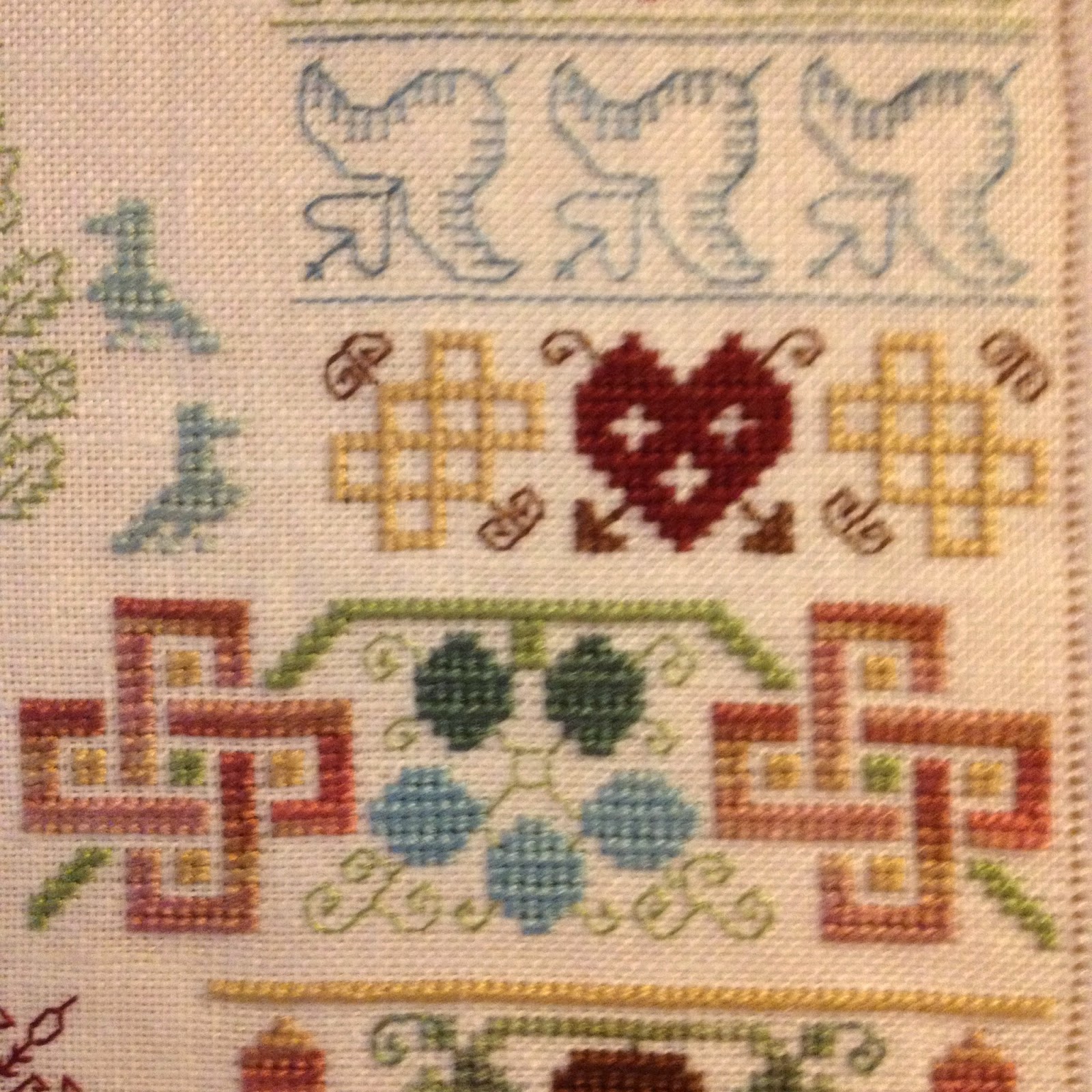I'll begin with the 2005 Williamsburg Embroidery Seminar, my first seminar. After three years without a vacation, I was finally treating myself to a solo get away. Having elderly schnauzers, the male being diabetic and eventually blind, their health could only really be managed with consistent daily care. I was so ready to get away, after they both entered doggy heaven. I had signed up for Tricia Wilson Nguyen's, 'Flowers of the Needle Never Fade', needle book and pincushion class. Another of her designs reminiscent of the 'Shady Bower' motif samplers originating from the East Coast. I was familiar with Tricia's teaching style having had taken several of her classes in the past, more about her and her company, Thistle Threads, later. I purchased Tricia's stationary keep kit at the boutique which was finished with the same blue silk fabric used in my class kit. What a wonderful kit, every Janite needs a place to tuck your favorite letter writing supplies. The stationary keep's embroidered band, shown below is a very extensive design of Holbein (double running) stitch utilizing multiple colors of silk, plus Queen stitch, Smirna cross-stitch, a reversible long-arm cross-stitch band (or alternating back stitch), and tent stitch covered with Bouillon knots. I loved the color palette, the Mokuba silk ribbon ties, Thread Gatherer silken ribbon accents in Dessert Moss, and the verse; 'Though Far We Be Remember Me', and my full name with the date fit perfectly, absolute heaven...But, where to begin? I knew this is a reversible design, meaning it pretty much looks the same on the back as the front, I needed help!
Luckily, EGA offered a correspondence course in Holbein called 'A Swiss Sampler' by Ilse Altherr. Her original design inspiration was a sampler in the Landesmuseum, Zurich, Switzerland encompassing 212 patterns in color silk, mainly in Holbeinstich (double running), Sternstich (Algerian Eye) and Zopfstich (long-arm cross-stitch) completed in 1665 with the initials AST. Ilse is a master of the mechanics of double-running stitch. This sampler was so intense, I can guarantee I will never find a Holbein pattern in which I will not be able to dissect. Below are several of the motifs from the class sampler. The corner motifs were used in Knottedoek's, embroidered linen hankies, in which coins were inserted and loosely knotted. If offered to a young lady she would pull the knot tight, thus 'tying the knot', or accepting a man offer of marriage. The clasped/fellowship hands symbolize, christian fellowship or love. I thought several times while stitching this piece in 2009 how important the hands must be to christian fellowship and our culture. I remember my Dad giving me lessons on how to shake a man's hand, firmly, and eye contact. After all I was going into a predominately man's field of study in the 1970's and most women at that time were not taught the mechanics of a handshake, some women are still clueless...


One of the bands below I used a over-dyed silk thread from my stash. Note, I split the strands in pairs of two and worked the motif by loading three needles and working the pattern so the trellis pattern looks like a mirror image in two planes....way cool! That technique was from a C.A. Wells class, more about C.A.'s wonderful classes later too!
The techniques discussed in this post are very basic foundation embroidery techniques in counted thread, Note, the sampler edges are finished in hem stitching, a technique used to finish all fine linens. Early band samplers were all finished in this technique. Enough to think about for today!




No comments:
Post a Comment